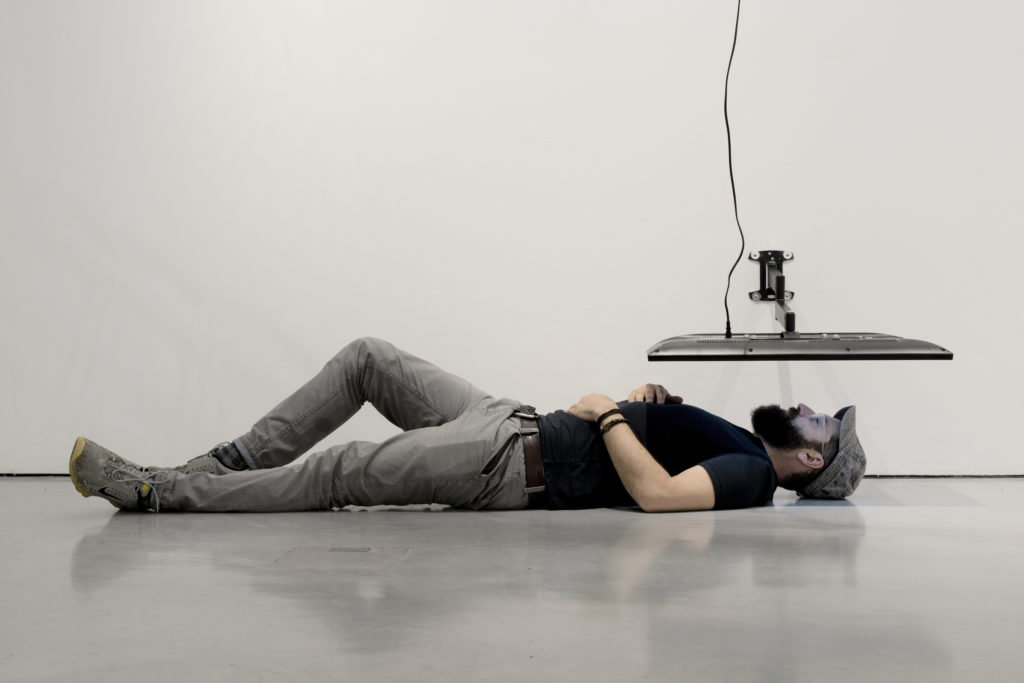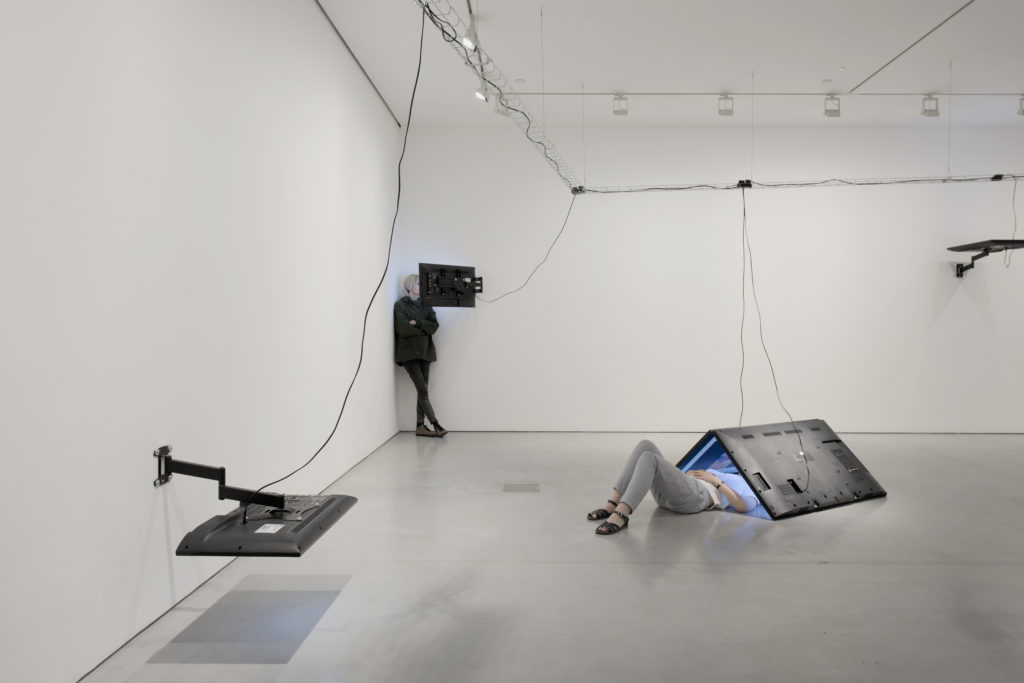Invisible and Underpaid Web Workers
Review about Eva and Franco Mattes.
The secret universe of content moderators, these invisible and underpaid workers in charge of watching videos, comments and suspicious images and removing them, is the intriguing and urgent topic of the exhibition "Abuse Standards Violations" shown from June to August 2016 at Carroll / Fletcher in London. In a series of video installations, Eva and Franco Mattes (1976) explore the largely anonymous labour force of content moderators that has emerged with the rise of social media.
Eva and Franco Mattes are an artist duo who are working together since 1994. Their practice combine internet, video and performance. Pioneers of the Net Art movement, they are renowned for their artistic approach devoted to subversion of public media. Artists and hacktivists, they produce artistic work involving the ethical and political issues arising from the creation of the Internet. Especially focus through social media, creating situations where reality and fiction merge into one. The artist duo have been using for many years different identities and names (operating under the pseudonym 0100101110101101.org for example) in their controversial artworks involving many polemics with the South Korean Ministry of Culture and Tourism, The Vatican or Nike Corporation for example. They have also manipulated video games, internet technologies and street advertising to reveal truths concealed by contemporary society.
The centerpiece of the exhibition "Dark Content" is about "content moderators" workers, and the process determining the approval or not of content displaying on internet. We can hear these moderators represented by impersonal avatars that change sex, age, color. They talk about their experience moderating and viewing disturbing content. They also talk of their work’s conditions. An anonymous proletariat whose daily life is done (one of them lives in her car and moderates porn content from the free Wi-Fi hotspot of a fast-food restaurant) often combined with loneliness and psychological suffering. The installation present a set of interview videos, some are accessible exclusively on the Darknet, and other are shown in the exhibition. The videos are presented on convoluted office furniture with a monitor and headphones as a sculptural form, forcing the viewer to contortion. I found particularly interesting how the work points out to the porous borders of what belongs to censorship, conscientious application of web standards, or simple arbitrariness. They encourage people, especially those unfamiliar with the anonymous Internet, to venture into the Darknet. The artists refer also to the anesthesia of people to atrocities happening in the real world. Violent content is often the most successful on internet and others medias.
"By Everyone For No One Every Day" (BEFNOED, 2014) is also part of the show. By using a range of crowdsourcing websites, the artists gave instructions to anonymous workers to realize a series of absurd performances for webcam. This is a relevant comment on the act of online sharing, the desire of become famous and the universe of content online that may never have any viewers at all. It is also question the aspect of labor exploitation, freelancing and precarious work. The placement of the monitors in the gallery constrain viewers into many physically uncomfortable and weird positions in order to watch these videos of banal tasks. It is interesting how the visitors have to take on the role of performers themselves. The display include also a strong anonymous aspect. It is impossible for the others spectators in the gallery to see what the viewer is watching on these screens. They are like shameful objects hiding their faces.
The presentation of the works in the exhibition involves numerous choices and addresses questions of agency in relation to the production of content. With their installations they found a relevant way to show an immaterial, secret and invisible subject difficult to represent. The exhibition encourages visitors to question themselves about a current topic that concerns everyone and still less known by too many.
Sources :
www.carrollfletcher.com/exhibitions/55/overview/
www.0100101110101101.org
www.andfestival.org.uk/events/dark-content-eva-and-franco-mattes/
www.nytimes.com/2016/06/26/arts/design/illuminating-the-dark-web-and-content-monitoring.html
www.arshake.com/en/eva-e-franco-mattes-breaking-banality
Bastien Gomez is a student from the Master in Photography at ECAL. He wrote this review about Eva and Franco Mattes work under the "Contemporary Photography" course held by Kim Knoppers.




